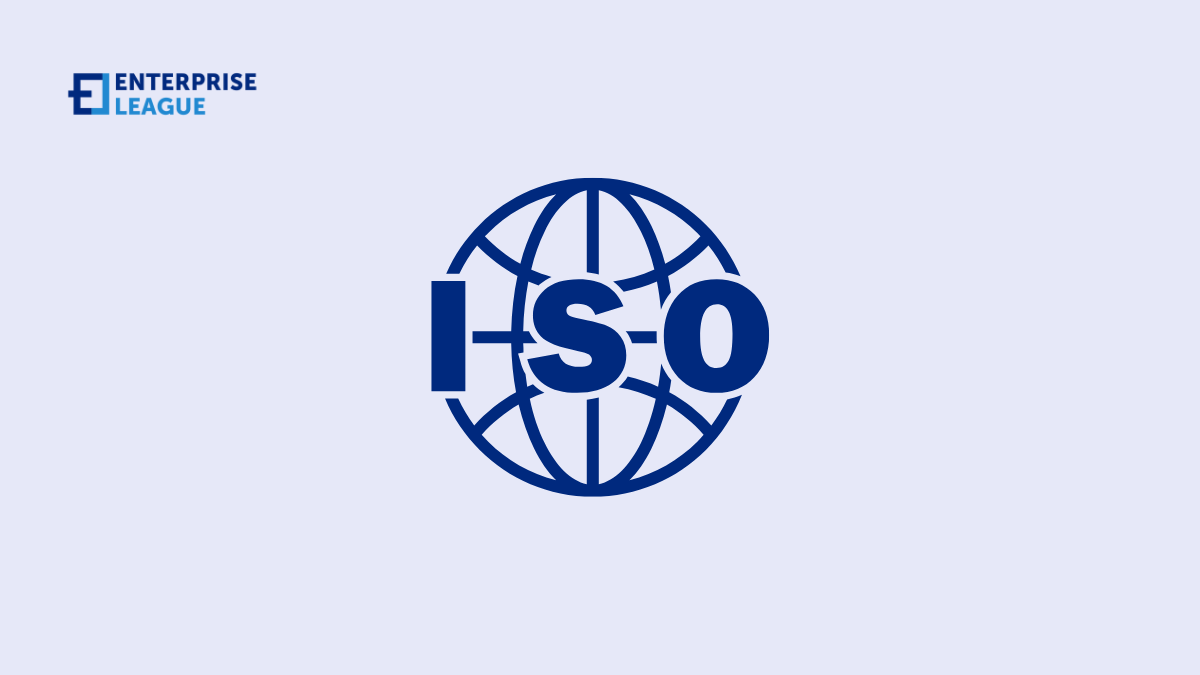Operational excellence through the integration of ISO framework standards
December 05, 2024

What really sets successful businesses apart, is not working harder but working smarter. Sure, everyone talks about operational excellence, but the companies that actually nail it are the ones that have a solid system in place. That’s where ISO standards come in. These aren’t just fancy certificates to hang on your wall, they’re proven blueprints for running a tight ship.
By weaving an ISO framework into your daily operations, you’re basically giving your team a roadmap to success. And with modern tools like compliance software making it easier than ever to stay on track, you can focus less on paperwork and more on growing your business. Think of it as building a foundation that’ll help you stay ahead of the competition, no matter what changes come your way.
Role of ISO standards in operational excellence
Think of these standards as a common playbook that helps businesses run smoother, no matter where they are in the world. They’re not just random rules – they’re tried-and-tested ways to make sure everything’s running safely and efficiently. When companies follow these guidelines, they don’t just get better at what they do, their teams start speaking the same language and spotting ways to improve things.
Plus, when you’re doing business globally, having these standards in place is like having a universal translator. Everyone knows what to expect, making it easier to work together and deliver consistent results. When potential partners or customers see you’re following these standards, it’s like having a seal of approval that says “These folks know what they’re doing.”
Aligning organizational objectives
For businesses, the first step toward leveraging these frameworks is aligning them with their objectives. Organizations must identify their primary goals whether customer satisfaction, improved product quality, or enhanced risk management and map these to relevant ISO standards.
Such alignment ensures that every operational effort is geared toward measurable outcomes. Establishing a clear connection between these standards and strategic goals can help organizations prioritize resource allocation effectively. This alignment also ensures that initiatives are sustainable and can adapt to long-term market demands.
Implementing a QMS for continuous improvement
A Quality Management System is like having a GPS for your company’s success. It helps you stay on track to deliver great products and service every time, not just when you’re having a good day. By keeping tabs on how things are running and what your customers actually want, you can fix issues quickly and stay ahead of problems.
The best part is when everyone in your company knows the plan and has the tools to make things better, you create a culture where good ideas can come from anywhere. It turns “good enough” into “how can we make this even better?
Enhancing risk management
Risk is inherent in every business. These standards offer a structured approach to identifying, analyzing, and mitigating risks. By integrating this framework, organizations can anticipate challenges, implement preventative measures, and maintain resilience against potential disruptions.
The standard also provides methodologies for continuous risk assessment, keeping businesses agile in volatile environments. Effective risk management enhances organizational confidence, enabling leaders to make informed decisions in uncertain scenarios.
Strengthening information security
Safeguarding sensitive data is critical and ISO/IEC 27001 provides a comprehensive framework for managing information security risks. Its implementation not only fortifies an organization’s digital defenses but also reassures clients and stakeholders of the organization’s commitment to protecting valuable information assets.
Additionally, adherence to this standard reduces the likelihood of costly data breaches. It also promotes a culture of cybersecurity awareness among employees, making them an integral part of the defense mechanism.
Promoting environmental responsibility
Environmental concerns are growing across industries. The frameworks focus on Environmental Management Systems (EMS), guiding businesses to reduce their ecological footprint while meeting compliance requirements. Adopting this standard not only enhances sustainability efforts but also positions organizations as environmentally conscious leaders.
Businesses implementing this framework can improve operational efficiency by minimizing waste. Furthermore, it fosters goodwill among consumers who increasingly favor eco-friendly brands.
Ensuring energy efficiency
Companies are waking up to the fact that smart energy use hits two birds with one stone, it cuts costs and helps the planet. When businesses know exactly how much power they’re using, they can spot ways to trim the waste while keeping their operations running smoothly.
Over time, those energy savings add up to serious money in the bank, not to mention a smaller carbon footprint. This way of thinking also gets companies excited about trying out renewable energy. And there’s another bonus it keeps them in line with energy rules, so they don’t have to worry about getting fined.
Streamlining various processes
ISO’s principles of process improvement and consistency form the backbone of efficiency. It enables businesses to standardize their workflows, minimize redundancies, and achieve better coordination across departments. The result is a well-oiled operation capable of adapting to changing demands.
This standard also encourages regular performance reviews to ensure continuous optimization. Furthermore, it supports innovation by identifying opportunities for improvement in existing processes.
Leveraging ISO for food safety management
For organizations in the food industry, these are indispensable. This standard ensures the safety of food products throughout the supply chain, reducing contamination risks and safeguarding public health. Its comprehensive approach to food safety management enhances customer trust and operational reliability.
It also helps businesses maintain compliance with global food safety regulations, minimizing the risk of legal repercussions. Additionally, adopting this framework promotes transparency across the supply chain, fostering stronger partnerships.
Integrating occupational health and safety
Workplace safety is paramount for operational continuity. These provide a framework for identifying workplace hazards, implementing safety measures, and promoting employee well-being. Businesses adopting this standard not only protect their workforce but also enhance productivity and morale. It also reduces downtime caused by workplace incidents, ensuring smoother operations. Moreover, fostering a safe work environment improves employee retention and attracts top talent.
Utilizing ISO for business continuity management
Disruptions can significantly impact business operations. The standard focuses on Business Continuity Management (BCM), offering strategies to maintain operations during unexpected events. By adopting this framework, organizations can ensure resilience and recover quickly from disruptions, preserving both reputation and revenue. It also provides clear guidelines for creating contingency plans tailored to specific risks. Furthermore, it instills confidence among stakeholders that the business is prepared to handle crises effectively.
Achieving regulatory compliance
These standards help companies stay on the right side of the rules without giving themselves headaches. When businesses follow them, they dodge legal troubles and build trust with everyone they work with.
It’s also a big plus when looking for partners overseas, they like seeing you follow the same playbook. Best of all, companies using these standards don’t have to scramble when new industry rules pop up.
Leveraging ISO compliance management software
More businesses are turning to special software to handle their ISO requirements without the headache. These programs make it easier to track everything, keep documents in order, and see how well things are working in real-time. When picking software, companies need to make sure it can grow with them, work with their other systems, and come with solid tech support. The right program doesn’t just check boxes, it helps the whole operation run better.
Following ISO guidelines gives companies a clear path to doing better work, staying on top of problems, and rolling with the punches when things change. When companies match their goals with ISO standards, use the right tech, and keep pushing to get better, they end up staying ahead of competitors while building something that lasts.
Conclusion
Keeping up with standards might sound like a headache, but it’s really about working smarter, not harder. When companies bring these frameworks together, they’re not just checking boxes, they’re setting themselves up to run better, spend less, and stay ahead of the game. Plus, they’re showing customers and partners they mean business when it comes to quality and reliability.
More must-read stories from Enterprise League:
- Innovative customer appreciation ideas for small businesses.
- Proven and tested psychological tactics for successful marketing.
- The only list of novels for entrepreneurs that you will ever need.
- The importance of customer-focused strategy for your business.
- Getting your product in stores doesn’t have to be complicated.
Related Articles
The 9 Best Payment Processing Services for SaaS
Running a software business means handling money from customers who expect things to work smoothly. They sign up, enter their card details, and assume the rest happens without a hitch. On your end, though, payment processing is a whole different story. You need...
Building a U.S. Real Estate Portfolio: Why Beverly Hills Should Be Your First Step
The United States has long been a magnet for real estate investors seeking stable returns and prestige. Among its many luxury markets, one name consistently stands out: Beverly Hills. Known worldwide for its glamour and exclusivity, it represents more than just a...
Top 7 SEO Services for Law Firm Websites
In the legal sector, digital visibility is the primary determinant of case volume. For attorneys, implementing a specialized SEO service for Law Firm website is a fundamental requirement for operational stability. Generalist marketing strategies frequently fail in...
The 9 Best Payment Processing Services for SaaS
Running a software business means handling money from customers who expect things to work smoothly. They sign up, enter their card details, and assume the rest happens without a hitch. On your end, though, payment processing is a whole different story. You need...
Building a U.S. Real Estate Portfolio: Why Beverly Hills Should Be Your First Step
The United States has long been a magnet for real estate investors seeking stable returns and prestige. Among its many luxury markets, one name consistently stands out: Beverly Hills. Known worldwide for its glamour and exclusivity, it represents more than just a...





